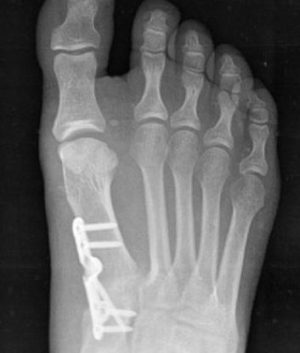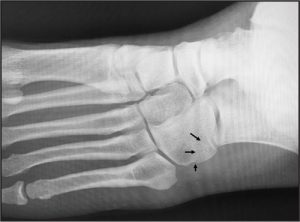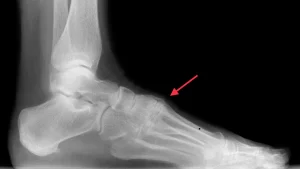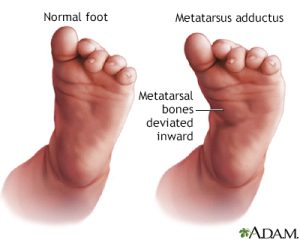
Dorsal osseous compression syndrome (DOCS), also known as dorsal compression syndrome or dorsalis pedis compression syndrome, is a medical condition characterized by compression of the dorsal (top) surface of the foot, usually by adjacent bones or structures. It can cause pain, discomfort, and other symptoms in the affected foot.
The condition typically occurs due to abnormal pressure or compression on the dorsum of the foot, which can result from various causes, including:
- Tight footwear: Wearing shoes that are too tight, narrow, or constrictive can compress the bones and soft tissues on the top of the foot, leading to dorsal osseous compression syndrome.
- Bone deformities: Some individuals may have anatomical variations in their foot bones, such as prominent dorsal bones or accessory bones, which can lead to compression of nearby structures.
- Trauma: Previous injuries or trauma to the foot, such as fractures or dislocations, can result in changes in the alignment of the foot bones, leading to dorsal compression syndrome.
- Overuse or repetitive activities: Repeated activities that involve excessive dorsiflexion of the foot, such as running, jumping, or wearing high-heeled shoes for prolonged periods, can cause compression of the dorsum of the foot.
Symptoms of foot dorsal osseous compression syndrome may include pain, tenderness, swelling, bruising, and limited range of motion in the affected foot. The pain may worsen with activity, walking, or wearing tight shoes, and may improve with rest and elevation of the foot.
Treatment options for foot dorsal osseous compression syndrome depend on the underlying cause and severity of the condition. Conservative treatments may include rest, ice, elevation, compression, wearing properly fitting footwear, and avoiding activities that exacerbate the symptoms. Orthotic devices, such as padding or shoe inserts, may also be recommended to alleviate pressure on the affected area.
In some cases, if conservative treatments are ineffective, more advanced interventions may be required, such as corticosteroid injections, physical therapy, or in rare cases, surgical interventions to address any bone deformities or structural abnormalities causing the compression.
If you suspect you may have foot dorsal osseous compression syndrome or are experiencing foot pain or discomfort, it is important to consult with a healthcare professional for a proper diagnosis and appropriate treatment plan tailored to your individual needs.








